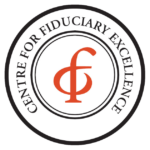
Benefits Administrators Privacy Policy
December 8, 2023
CEFEX TPA Certification; 13 Years Running
October 28, 2024As part of SECURE 2.0, certain employers sponsoring 401(k) or 403(b) plans must incorporate automatic enrollment provisions. The automatic enrollment is for eligible participants to be enrolled into active participation immediately upon meeting eligibility unless they otherwise elect not to participate. Below is a list of required plan provisions:
-
1. The initial default deferral rate may not be less than 3% or greater than 10%.
- a. If the default deferral rate is less than 10%, the deferral rate must escalate by 1% on the first day of each plan year up to a minimum of 10% (not to exceed 15%). If the initial deferral rate is set to 10%, no escalation is required.
2. If the retirement plan provides for employee direction of investments and the employee does not make an investment election, the employer must use a QDIA (Qualified Default Investment Alternative).
3. The plan must allow for permissible withdrawals, whether the participant directs investments or not. This provides the participant, who was automatically enrolled, a 90 day window to elect a distribution of their deferral from the plan and update their deferral election accordingly.
There are a few exceptions for 401(k) and 403(b) plans to the new rule:
-
1. Plans established before December 29, 2022, are not subject to the mandatory auto enrollment.
2. Businesses who employ fewer than 11 employees: This exception expires 1 year after the close of the first tax year once the employer goes over the limit. Example: An employer reaches 11 employees during the tax year ending December 31, 2024. The plan will have to add automatic enrollment no later than January 1, 2026.
3. The 401(k) plan is established by a business that has been in existence for fewer than three years and is not subject to auto enrollment until after the three-year anniversary of the business.
4. Churches and governmental entities are always exempt.
Please note if you are part of a MEP or PEP, the mandated automatic enrollment has special considerations and those will be addressed separately.
Mandated automatic enrollment should result in an increase in the number of participants in 401(k) and 403(b) plans which is the primary purpose of the legislative change. Additionally, employers may want to default the automatic enrollment rate at 10% instead of 3% to avoid the deferral escalation provision. Benefits Administrators will work with each client to navigate these complex compliance changes and provide expertise in administering your retirement plan for the future.
We are advising clients regarding SECURE 2.0, which impacts retirement plans. If you would like assistance with compliance for this or other retirement benfit plans, contact us at https://benadms.com/contact-us/.




